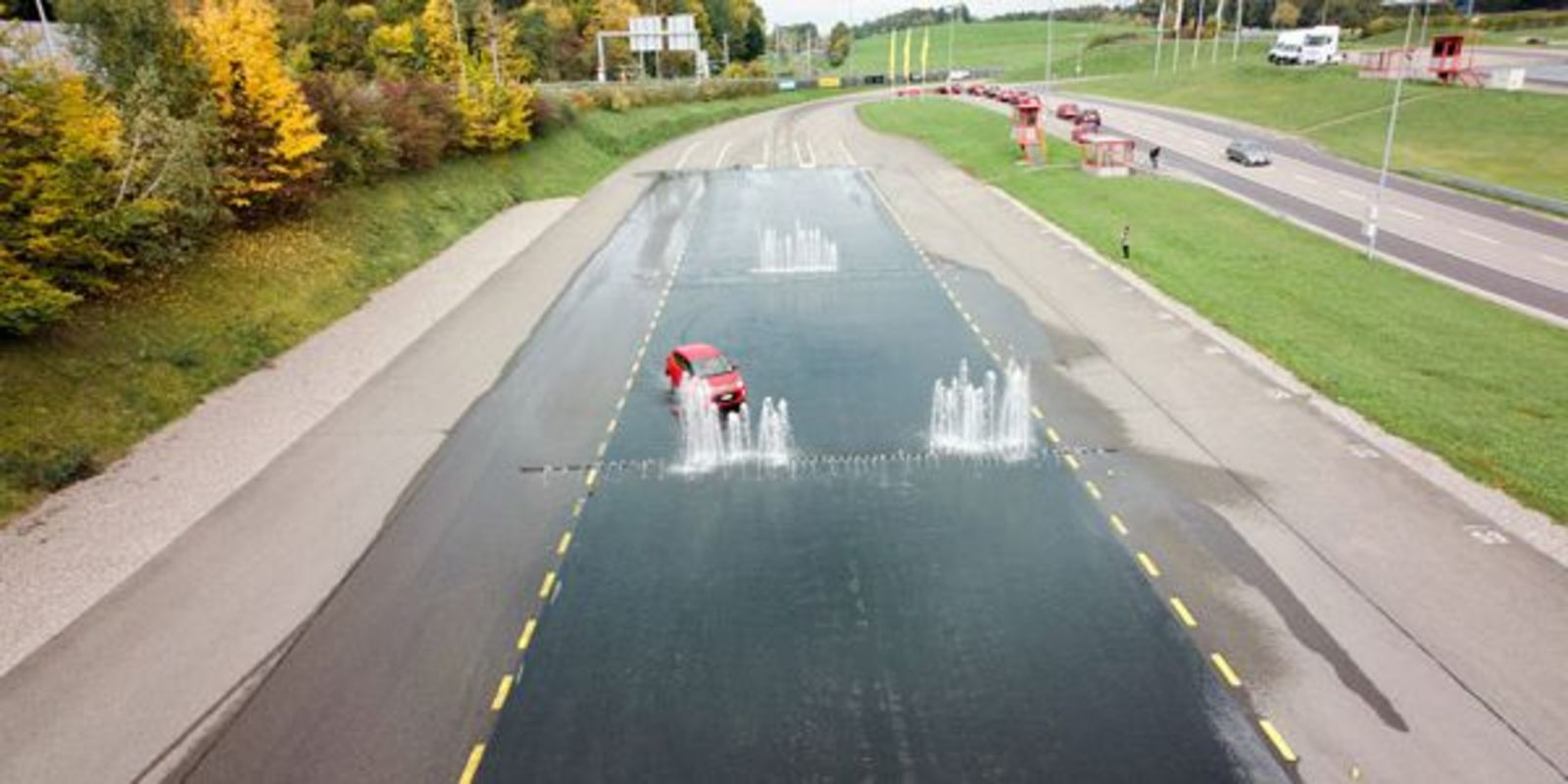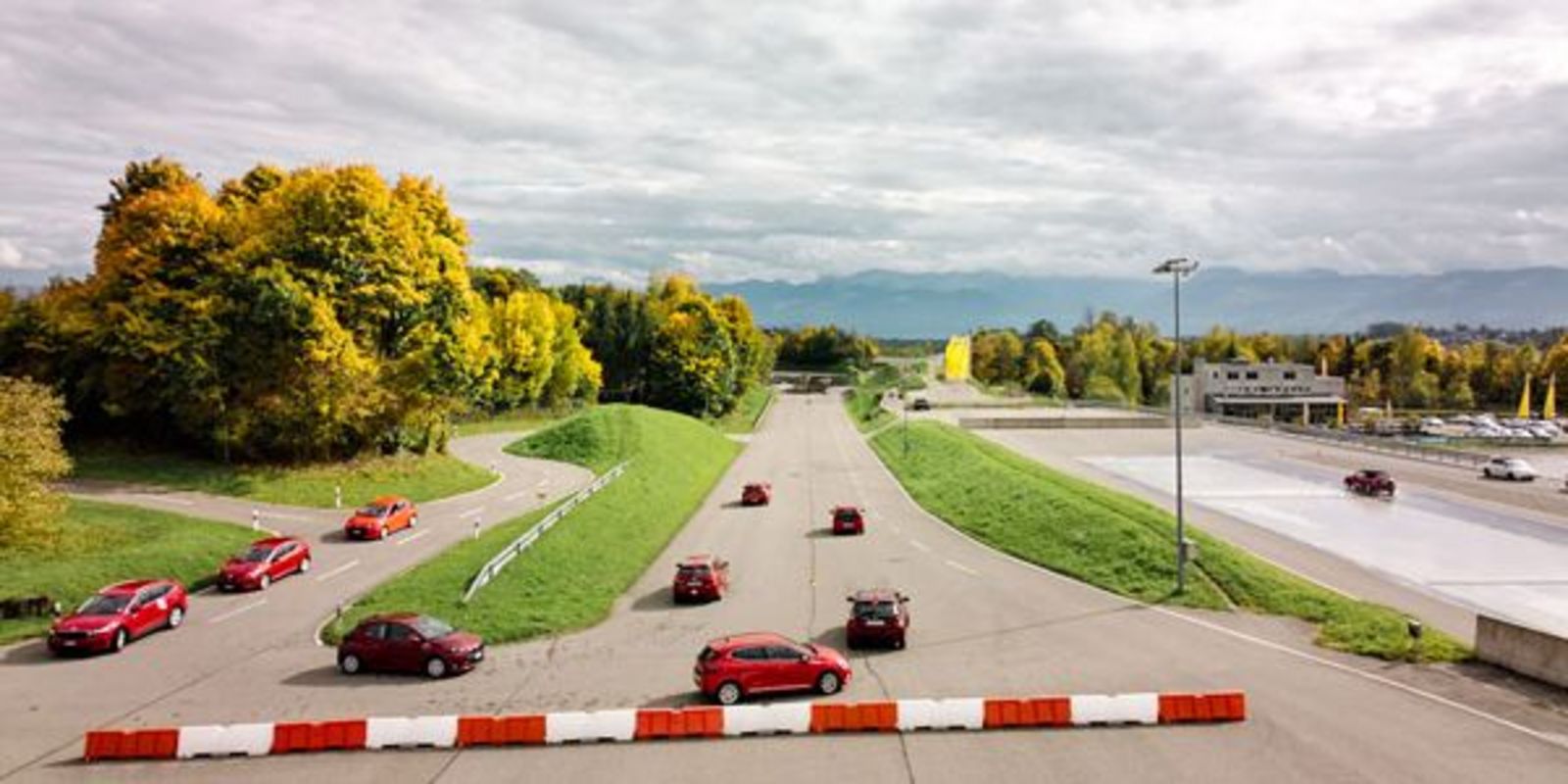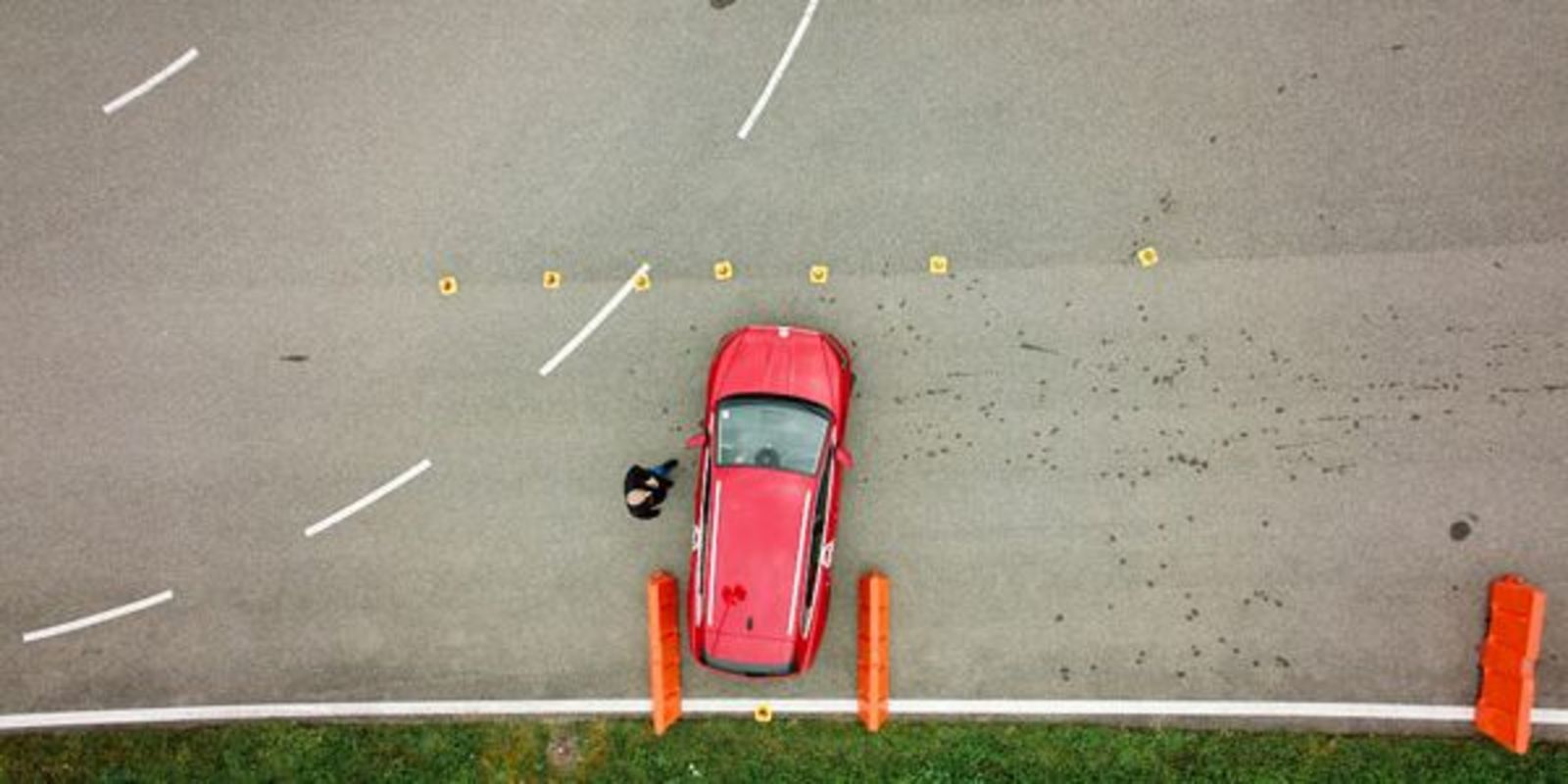The statistics are unequivocal: three quarters of all road traffic collisions are due to human error. Most involve skidding and/or single-vehicle incidents. The good news: in part at least, you can avoid lessen the risk by keeping your car under control and driving prudently. That’s why we paid a visit to the TCS driving centre in Derendingen SO on a Thursday morning in October.
After a welcome by the instructor and a brief theory session, off we went to the training area, which looks like a mini Formula 1 track. The driver training consists of various exercises that participants complete in their own vehicles. Here are the six key insights that our author came away with from the course
1. What’s emergency braking?
Situations requiring emergency braking usually happen without warning and with no time to prepare. There’s only one thing for it: slam on the brakes until the vehicle comes to a complete stop. You soon learn that emergency braking is something anyone can do, provided you apply the brakes with all your strength.
2. What if you’re heading straight for an obstacle?
Cars can be steered, even during emergency braking. There are limits to how much, of course, but at best it’s enough to avoid the obstacle. It’s important not to oversteer: doing so makes matters worse. You should only steer enough to make the vehicle go where you want it to. In the words of the instructor: “Brake hard, steer gently.”

3. What’s so important about having the right seat position?
Only if the seat’s properly adjusted can you perform the emergency stop safely and with full force. Properly means: the seat should be far enough forward so that your arms make a right angle – and high enough to leave a hand’s width of room between your head and the roof. The headrest should be located at the back of the head, not the nape of the neck. Mobility users, in particular, should take the time to adjust their seating position before every journey.
4. Why does the road’s surface play such an important role?
The surface has a major effect on the stopping distance. Assuming the braking performance is 100% in perfect conditions, it drops to 50% on a wet surface. And just 10% on a slippery surface. But even here, you’re not completely at the mercy of fate: you can influence the direction of travel by steering gently.
5. How does speed affect the stopping distance?
A vehicle’s stopping distance doesn’t increase linearly with speed, but by a factor of four. When the speed doubles, the stopping distance increases four times. And that’s only under perfect conditions. The wetter the road, the greater the stopping distance. In short: adjust your speed as conditions dictate.
6. How wide should the gap between vehicles be?
As a rule of thumb, the minimum distance between vehicles should be approximately two seconds. The “hare and fox” exercise shows how this is barely enough: two vehicles drive in neighbouring lanes, one behind the other. As soon as the vehicle in front makes an emergency stop, so must the pursuer. It quickly becomes clear that those two seconds are only just enough. Leaving a three-second gap from the vehicle in front makes for a safer, more serene driving experience.

7. How useful are another person’s directions?
The task seems easy enough: take it in turns to guide each other into a tight parking space. But it’s not as simple as it looks. Some people don’t understand the hand signals, others stand in the wrong place and the signals aren’t seen. In short: to avoid damage, a brief discussion should take place before the exercise. Where should the person on the kerb stand? What’s the meaning of the hand signals?

Without a doubt, anyone following these six insights is already a little safer on the road than before. But ultimately, what’s true in other aspects of life also applies to driver training: experiencing something in real life is the best way to internalise it. You’ll find the dates of forthcoming driving training sessions under the following link; you’ll also be able to book a place: https://www.mobility.ch/en/tcs-driver-training

Your comment